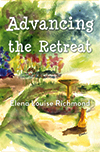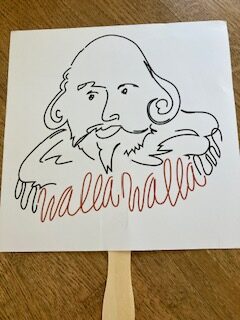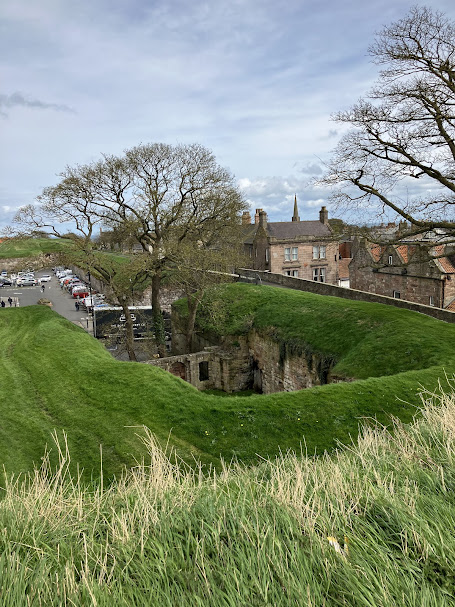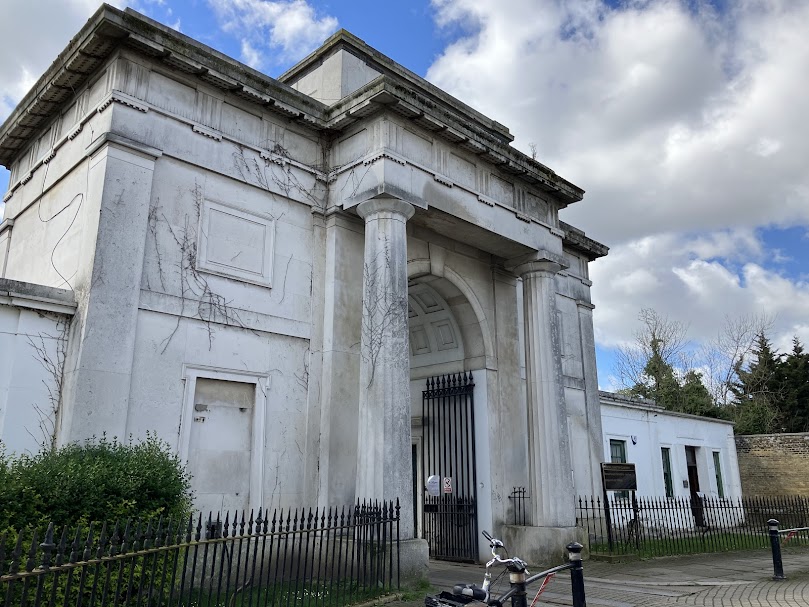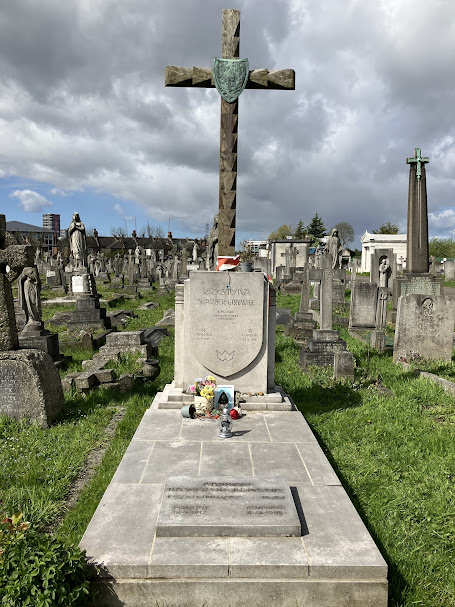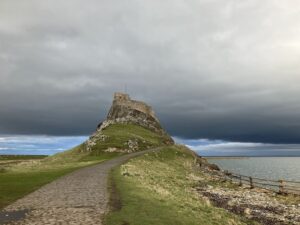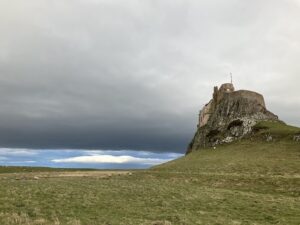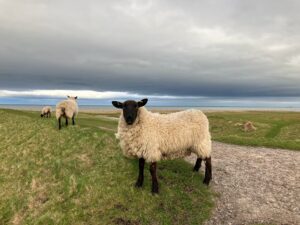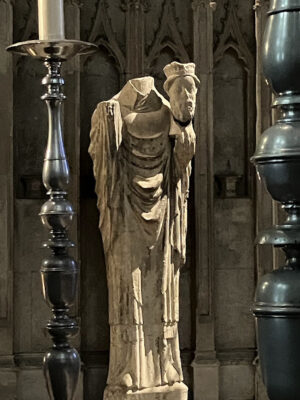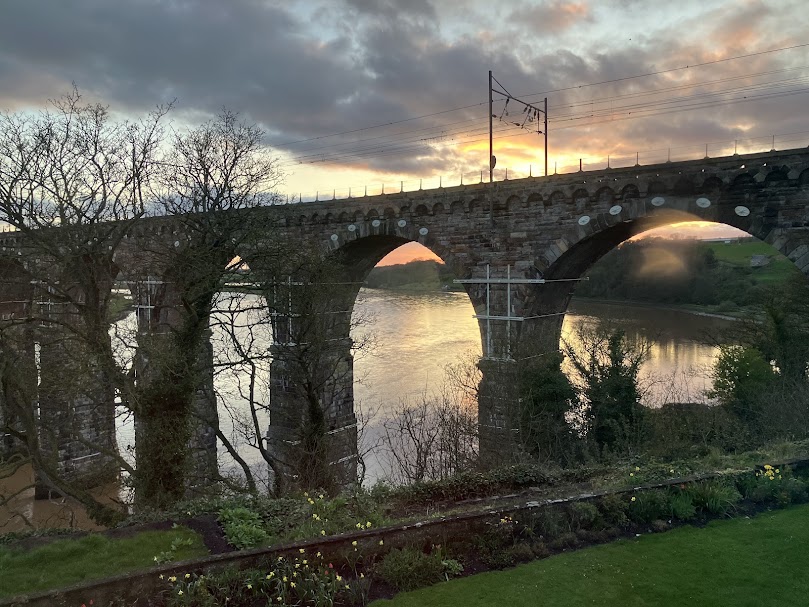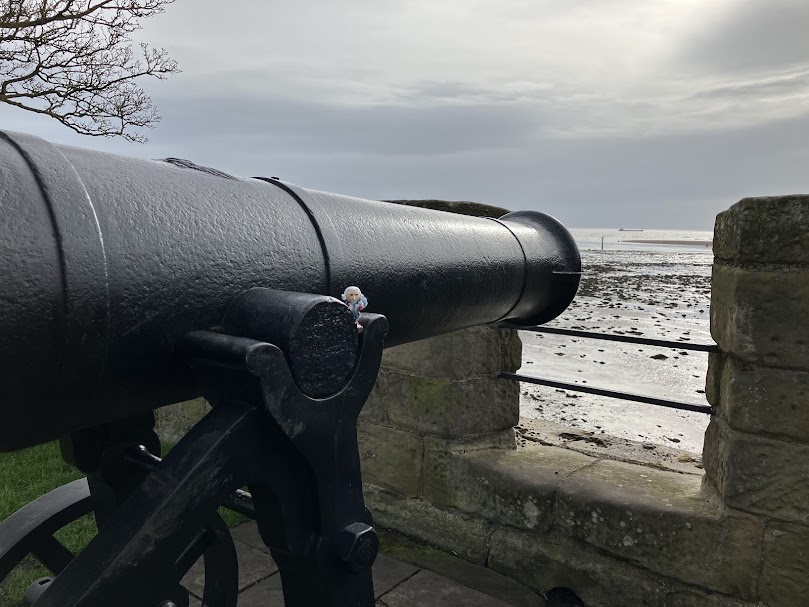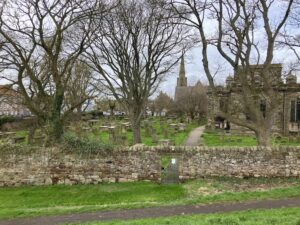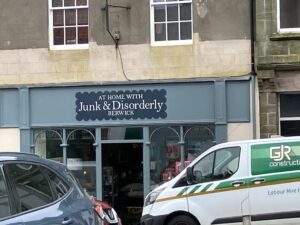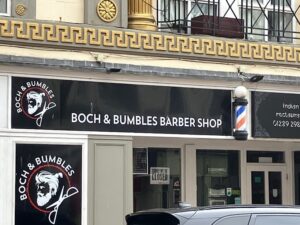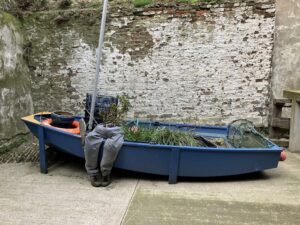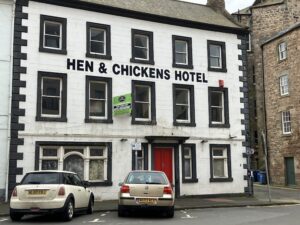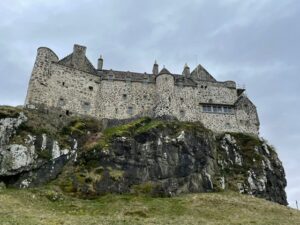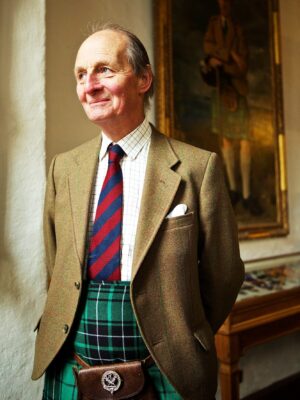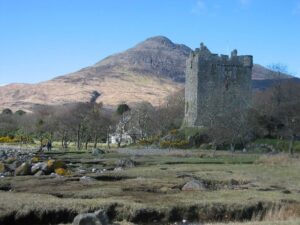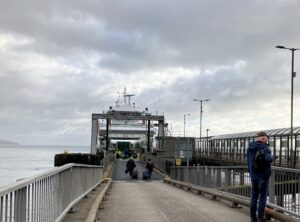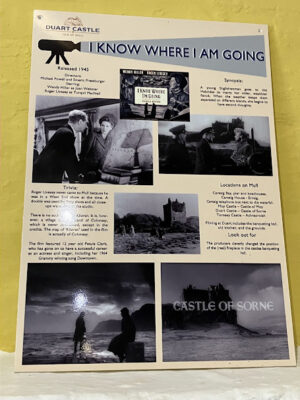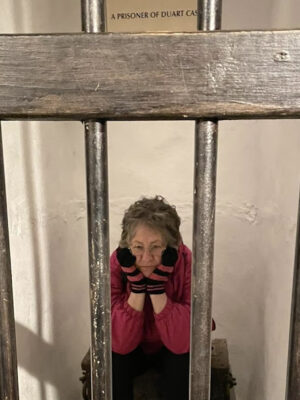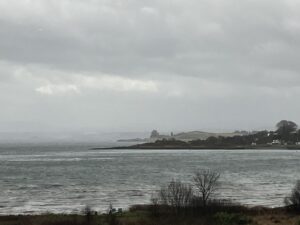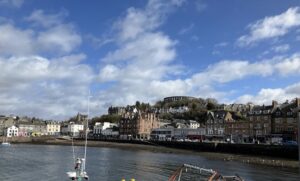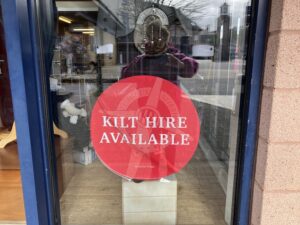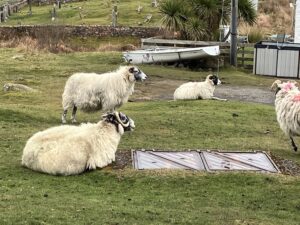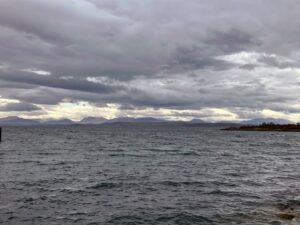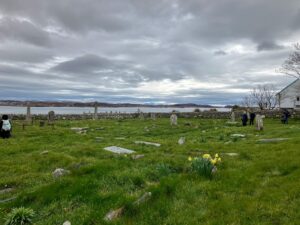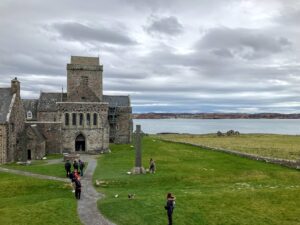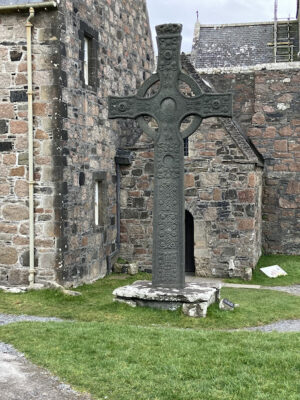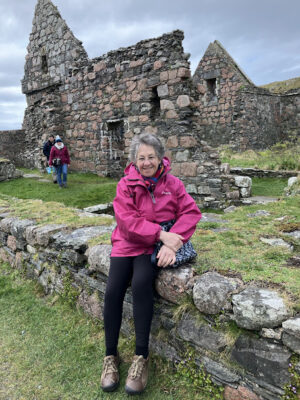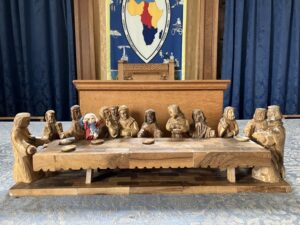How I Spent my December, 2024
You know how people (probably you) complain that Christmas music begins too early — like right after Halloween? If you’re a musician, by the time Halloween has reached its sugar-sated conclusion, you’ve been rehearsing Christmas music since the end of September. And you had to start thinking about it in August. That’s been my life since the 1980s. I don’t whine much about it anymore although when I had young piano students, I got heartily sick of some of the easier carols like We Three Kings and Good King Wenceslas.
Every fall I have two singing groups that I get ready for a big concert mid-December. I coach my private students to do a little holiday recital as well. That’s all in a day’s work; some years I love it more than others. But what’s the most fun for me in the holidays is the baking and gift wrapping and enjoying the lights. I get quite Grinchy when those activities are scuppered.
The end result of the holiday season is that I am usually so exhausted by Christmas Eve that I want to go to bed and not get up until the new year. If there’s a gift left to distribute, I want to throw it inside the door and say Merry Fucking Christmas.
And then I usually get sick.
I don’t know how I avoided all that this year because I was crazily preoccupied. Andrew and I made candy and packed it in boxes for friends: candied orange peel, peanut brittle, fudge, two kinds of divinity, pecan sandies and biscotti. We shopped for stocking stuffers, planned Christmas Eve Dinner and decorated trees for both our houses. The night of the biggest OK Chorale/All Present concert, a college friend I hadn’t seen in years spent a night with us.
Andrew and I left early the next morning to drive to Port Angeles for the Black Ball ferry to Victoria. We had reservations to stay for two nights at the Empress Hotel and were booked for high tea. By the time we bundled into the car, I had doubts about whether or not I would be able to relax enough to enjoy myself or if I would be a big crabby mess. The former prevailed.
The two of us travel easily; we enjoy just being together. Both of us would rather be hours early than to feel rushed and worried about say, making a ferry. We got to Port Angeles with time to scout out the famous Swains, an old fashioned mercantile/general store and a place to eat, Country Aire (providing Port Angeles with healthy choices since 1975!)
Victoria is a charming city and our two days were a recovery of calm in the riot that is the American December. At the Empress, they fell all over themselves to serve and pamper. We had a luxurious dinner at the Q Restaurant. Q stands for Queen and the walls are covered with portraits of Queen Victoria in all stages of her reign except the grumpy “We are not amused” pose.
Our waitperson, Maddy, looked about 25 years old. She reminded me of myself when I taught pre-school.
“Oh now THAT!” she cooed when I asked about Queen’s Delight mocktail. “That’s one of my favorites!”
She enthused over every item we ordered – short ribs, risotto, creamed spinach, broccolini, fingerling potatoes and bread–like I would have a child’s story of a trip to Wild Waves. When the food appeared, we looked at the big platters in astonishment. We had ordered with the idea that in a classy restaurant like Q we might expect one spinach leaf and half a fingerling with a sprig of dill for fifty Canadian dollars.
We looked at each other. “Eat slow,” Andrew said. He repeated this several times as we tucked in. Neither of us do this naturally.
Towards the end of the meal, Andrew asked Maddy for the restroom. She sized him up. “Can you do stairs?”
Taken aback, he laughed. “Do I look that old?”
Maddy recovered immediately, which is how we learned she was actually nearer 50 than 25.
The restroom was up an old, wooden staircase that Fairmont Hotels hadn’t yet got its hands on. The steps were about four inches high, just right for women in corsets and long dresses. We revisited the staircase several times during our stay at the Empress because it was imposing and olde-worlde and more what one hoped the entire Empress would be like but wasn’t.
After our Q dinner, we walked up Government Street to what is still referred to as Chinatown and back down to the harbor, enjoying the clear night and the Christmas lights, especially those on the always imposing Parliament Building.
Our room was small and did not have the city view we had signed up for but the bed was comfortable and we both slept well. After creeping around trying to find things in our suitcases, figuring out the shower, making hot drinks and scrabbling together some breakfast from all the snacks we had brought, we set out on a pilgrimage to Bows Coffee Roaster (formerly Bows and Arrows.) Andrew orders their (single origin) coffee from Victoria where it seems to regularly get held up in customs. We went to pay homage, stock up and to get a cup of coffee to begin the rainy day.
We drove around James Bay and Oak Bay and stopped at a pharmacy to buy extra strength Voltaren and Tylenol with Codeine, everyone’s preferred Canadian contraband. It used to be tea and maple sugar products; this is the kind of wild travel acquisitions people make in their 70s.
Wandering around the hotel before our reservation for high tea, we somehow blundered into The Gold Area, that is to say, a section of the hotel reserved for its Gold members. Andrew—Mr. Ethics– was uncomfortable being in an unauthorized place but this is the bailiwick of the invisible, post-menopausal cat lady. I have learned that I can walk around and help myself to whatever is on offer in a place like the Gold area and no one will challenge me; certainly not in polite Canada. I took several handfuls of Smarties.
High tea was lovely. We were seated in a window overlooking the harbor. Our server was fun and had his patter down. When he took our picture, he instructed us to hold up our pinky fingers. We each had a pot a tea on a flame and tiered dishes of sandwiches (no crust) of cucumber, pate and lox; various small cakes, scones with clotted cream and jam and cherry jellies.
We walked back up Government Street to look for Canadian stocking stuffers. I took Andrew to Murchies (tea) and Rogers (chocolate), two places that were there long before I first visited Victoria in the 1960s. In one of the many souvenir places, I collected maple syrup products while Andrew was held captive by the owner, a French Canadian who insisted that Vancouver Island was larger than the state of Texas.
We found the Cuban cigar store. Andrew wanted a Cuban cigar but we understood it to be illegal to bring them back to the states. We were disabused of this idea by the owner who, like our tea server and the French Canadian with his fixation on size, had his patter down. He also seemed a little sleazy to me but apparently the prohibition on Cuban cigars has lifted so Andrew bought two Romeo y Julietas.
Late in the afternoon, the rain still coming down hard, we propped up on the bed in the small hotel room with no view. As novel as it was for me to be in this lovely city at Christmas time with a man I loved, I think what I enjoyed most of all was sitting around the cramped hotel room on a rainy day, laughing and talking. I tell Andrew all the time that I am a cheap date; here was an instance of it.
Andrew took a call from someone who was trying to work out the mess that is the accountancy for his disabled daughter’s care—something that gets him quite exercised. I sat next to him reading. Later I marveled at how easy it felt to be with him. Me, who craves her privacy and needs quiet. I should point out that in my entire 70 years, I’ve never had this level of comfort with another person, and certainly not a man.
We patched together a meal of snacks and then did some laps around the hotel. We walked on all the floors and saw views of the city that should have been ours. We found old furniture that I wished had been in our room. We looked at old photos of the hotel and found old menus from the 1920s when a rack of lamb was 80 cents. We tried out the exercise equipment and wished we had thought to use it sooner. We walked around the conference center and looked at the totem poles.
We left the next morning, a brilliant sunny day. I love the Port Angeles harbor. It feels real, gutsy. A functional, utilitarian non-touristy sort of place with the Coast Guard sitting there amidst the backdrop of the choppy straits of Juan de Fuca, which can be dangerous in the best of times.
We cruised through Customs. Elena: “Don’t mention the cigars, just in case. Let me do the talking.” I said something similar when we came across the border two days earlier in regards to the CBD gummies we had for sleep. Andrew had to go and find out that it was illegal to take them into Canada. The article even threatened “sniffer dogs.”
I said, “Why do you even go looking for articles like that? Leave it to me. You don’t know anything.” I put the CBD gummies in an Altoid tin (curiously strong peppermints, you know) to throw off the sniffer dogs. “Just let me do the talking.”
Honestly, with a post menopausal cat lady in attendance, a person is safer than he realizes.
 RSS Feed
RSS Feed